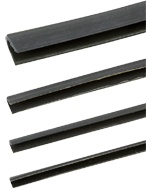Edge Pro
EDGE PRO is a highly flexible edge protection strip with a reheatable melting glue layer. With EDGE PRO you can easily cover sharp edges in your workplace, creating a safe environment for workers.
Moreover, EDGE PRO is ideal for protecting parts against mechanical wear such as dents and scratches, as well as weather influences. It can safely be used various material such as metal, wood, glass and certain plastics.
When EDGE PRO is heated over +80°C, the adhesive layer melts and flows. When EDGE PRO is heated over +120°C the V-shaped profile changes into a U-shaped profile and forms itself perfectly around the edges.
The flexibility of EDGE PRO is suitable for rounded interior and outer edges as well as straight edges. EDGE PRO guarantees constant protection in a temperature range of -55°C up to +80°C.


 TECH-MASTERS Group
TECH-MASTERS Group
















